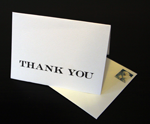As I was thinking about this post, I remembered the professor who used a “shuffle the cards” exercise in his writing class. We were all so focused on giving good, clear instructions for shuffling cards, that we forgot the obvious step number one: “Start by obtaining a deck of cards.”
 So, the obvious step number one in writing a blog post that gets read is, “Do you want to blog?” There are many good ways to pass along your information. Everything from phone calls, to text messages, to emails, and beyond.
So, the obvious step number one in writing a blog post that gets read is, “Do you want to blog?” There are many good ways to pass along your information. Everything from phone calls, to text messages, to emails, and beyond.
If you have decided you want to write a blog, why?
There are different kinds of blogs. There are different ways to write a blog post, and different reasons for posting your content. You may want to express your feelings about a certain issue or happening. You may have a subject, or some ideas that you just need to share. Or, you may be supporting your organization or your business. Your blog site may be a personal one, or a business one. Next come the toughest questions:
What do you want each post on your blog site to achieve? What do you want your blog site overall to do for you? Are these goals consistent with each other?
With this in mind, what reading audience are you writing your posts for? Who will be interested in what you’re writing about? Are you speaking your language or theirs – both visually, and in words? Are the readers you’ve identified consistent with your reasons for blogging, and with what you want to achieve with your posts? Do they have the resources to do what you want them to do? How will you obtain, create, and maintain a good, appropriate mailing list?
When your medium (the blog posts); the type of content you want to write about, and the type of blog site you want to create; your reasons for writing it; the reader; the tone – the personal nature or the business nature of your blog site; and your expectations for the results you will get from each post, and from the blog site overall can be expected to work together, you’re ready to write.
At this point, with your strategy settled,
1. Figure out what you want to write about with this post. To give you clarity and focus, a good place to start is by giving the post a rough title that says what you are posting about. Later on, you can rewrite that rough title into a headline for your post.
2. When you write your introductory paragraph(s), appeal to the interests of your readers. Let them know what this post is about. Suggest how it will solve a problem they may be having.
3. Organize and write your content for easy reading. The longer the post, the more important this becomes. Consider using sections, lists, and visual clues such as drawings, charts, and photos; type sizes and weights; perhaps videos, and colors to help your reader follow your conversation.
4. Make it pretty. If it looks professional you gain credibility. Consistency in appearance helps your readers to recognize your company and your brand at first glance, reinforcing your other consistent activities.
5. Give the post a final once-over. Revise your working title into an accurate, clear, appealing “grabber” to bring your readers in. Check for awkward spots, typos and inaccuracies. Now you’re ready to go!







